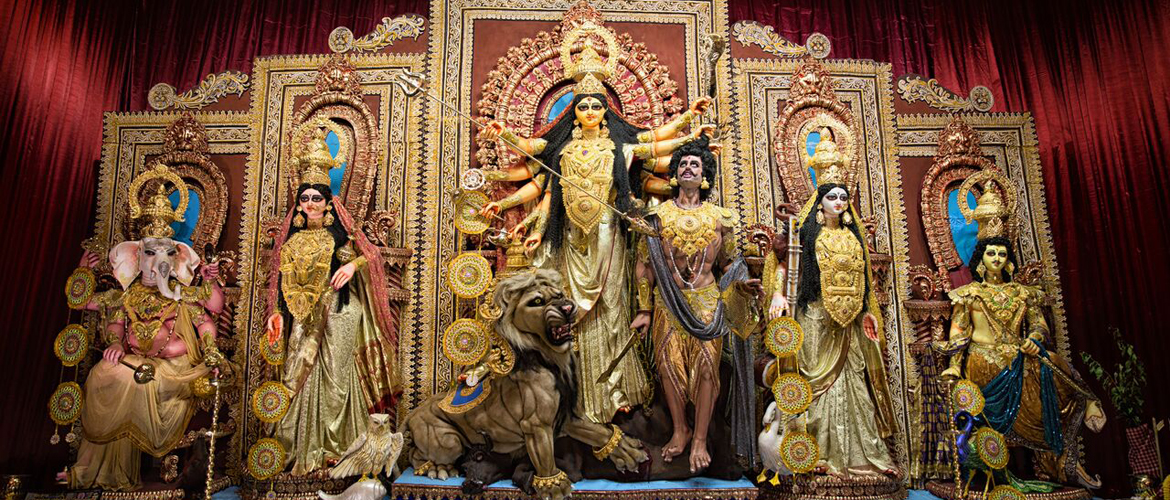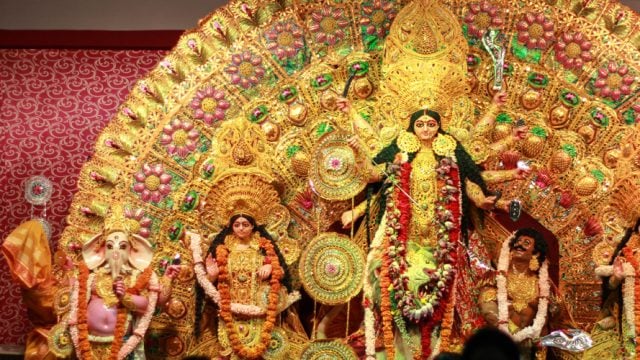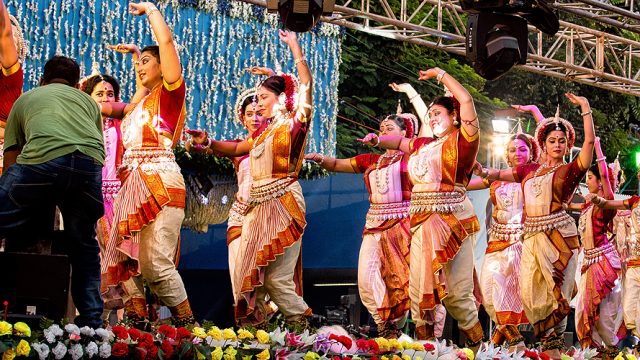Durga Puja memories are close to one’s heart. They can range from childhood joys to
Tanusree Shankar, one of the leading dancers and choreographers of contemporary dance in the country, reminiscences about her childhood memories of Durga Puja. “My favourite Pujo memories are from my childhood days,” Shankar says. “My father was a doctor in the army so our celebrations was in that circuit. They would start a while before the actual Pujo as we geared up for the festival with practices and lasted well after a month with Bijoya taking centerstage. No matter where we were posted, it wasn’t just the Bengalis who celebrated Durga Puja in such gatherings. All army officers would take part. We Bengalis were the hosts but everyone participated and celebrated our Indianness.”
Shankar remembers that it was the children who would start off the celebrations on Mahashashti. “There would be cultural programmes slotted for every day of the Pujos and it was us children who’d begin with one. The adults would then join and put up their programmes,” she adds.
“There would always be a known artist or theatre group who’d come to perform on the last day of the festival and we would always look forward to that day,” says Shankar. “We would play a guessing game in trying to guess who would come to perform. It was also great exposure because we came to know off such eminent people.”
For Shankar, there’s no specific Pujo memory that she can call favourite but it was a culmination of a lot of things. “Going to the pandal in the morning to eat luchi and bonde for breakfast, then bonding with friends and family, gorging on the prasad and bhog… it was a fantastic routine for us!” she smiles.
Leander Paes, winner of 18 Grand Slams and the only Indian to have participated in seven Olympic Games, fondly recollects his Durga Pujas in Kolkata. “I love the Pujos, especially pandal hopping,” Paes says from China where he’s currently playing a tournament. “The Ballygunge Phari Pujo is definitely a good one. My fondest memories of Pujo are when I was about 10 or 11 and we lived right next to Ballygunge, was trying to help out in making the murtis (idols)!”
Known to have a massive sweet tooth but always to shy away from them to maintain his strict fitness regime, Paes says sandesh was his favourite when younger. “Now it’s mishti doi and jalebi,” he laughs.
Another aspect of the Pujos Paes loves is the colours and costumes which accompanies the sweets, and the general happiness that pervades the streets and the soul of Kolkata.
Paes has some advice for visitors who are planning on experiencing the Durga Puja phenomenon. “Take part in making the mishti, mingle with the communities, try and understand the deep meaning and logic behind the symbolism. It’s very important to get behind the scenes. For locals, choose a pandal or community where your roots lie and get involved early. Durga Puja is a massive logistics exercise which can make a superb case study for any business to learn from,” Paes feels. “Just like the Rio carnival is a global festival, I feel our very own Durga Puja has the potential to reach similar levels. Just as my great great great grandfather Michael Madhusudan Dutt believed, our rich culture, traditions and customs should be passed from generation to generation through cultural extravaganza like the Pujo. It’s not just a festival to preserve for now but to ensure our culture is preserved for eternity,” Paes says as he signs off to go on to court for a practice session.
Prosenjit Chatterjee aka Bumba da, is one of India’s most celebrated actors and Bengal’s most famous hero on screen. For the much-acclaimed actor, his favourite memories of Durga Puja are from his childhood. “During our childhood, we would visit my mother’s (Ratna Chatterjee) native place for Pujo. It was near Dum Dum, very close to the airport. All relatives and cousins would come and my grandfather (SC Maitra) was the main organiser of Durga Puja in that house,” Chatterjee recollects. “It was a huge palatial building. During the celebrations, the girls of the house stayed in one room, their husbands in another while all the children together in another with grandfather. So many rooms stayed empty (with such sleeping arrangements) but we loved staying that way!” Chatterjee adds.
Chatterjee was very close to his maternal grandfather and another favourite Pujo recollection of the national award-winning actor is related to him. “Every evening my grandfather used to take all his grandchildren for the para Parikrama. We used to visit all the pandals wearing new dresses and that was something very special to all of us!” Chatterjee says before signing off.
Sourav Kothari, the Arjuna Awardee (cue sports) and current world No 2 in billiards, was busy winning a gold medal at the Asian Indoor Games in Turkmenistan last week, just before the Durga Puja celebrations gripped the city. “I love Durga Puja and this time of the year in the city,” Kothari says from Ashgabat.
“One Durga Puja memory which remains vivid is from last year. My sister (his twin) and nephew Riyansh had come down to visit us from the United States during the festival. On Mahashtami and Mahanavami, I remember our entire family went pandal hopping in South Kolkata. My then-two-year-old nephew was perched on my shoulders as we went from one pandal to another. The sheer perplexity that was visible on Riyansh’s face, the occasional spurt of excitement and the hysteria, sometimes, at the sight of the dhakis beating their instruments in a rhythm was an ineffable experience,” Kothari recollects.
“As it’s that time this year, I find myself looking through the old pictures with a smile on my face. It fills our hearts with happiness seeing our little boy in his myriad hues and the priceless family time we got with each other during such an auspicious occasion. That memory shall forever remain embedded in our hearts,” Kothari adds.
Krishna Basu, a leading popular modern Bengali poet, feels her childhood memories of Durga Puja has helped in her writing. “We used to visit our maternal grandfather’s house for Pujo at Tarakeshwar when we were young. Today, the Pujo is 417 years old!” Basu says. “There are so many fond memories over the years. All cousins and family would be together for those days of the Pujo; the memories of making narkol naru and kheer naru (sweets) for the rituals; going to the mela that would be set up nearby; the sheer joy of notun jama (new clothes) and new Pujo magazines… ah yes, those days were beautiful. I firmly believe that such a childhood has had a link in my poet life,” Basu adds.
“Another memory I have is during the Sandhi Pujo. Many of the family elders would start crying during the ritual because of such an emotional bond with Maa. Then during Bishorjon (Visarjan), everyone would get emotional because we felt Maa was going away. Our hearts would feel empty,” Basu says. “I still make it a point to revisit the fond memories of that special place one day during the Pujo celebrations.”
See wbtourismpuja.in & wbtourism.gov.in for more details and download the Sharadotsav App by the Dept of Tourism available on Google Play Store.
West Bengal
West Bengal Tourism
celebrities





